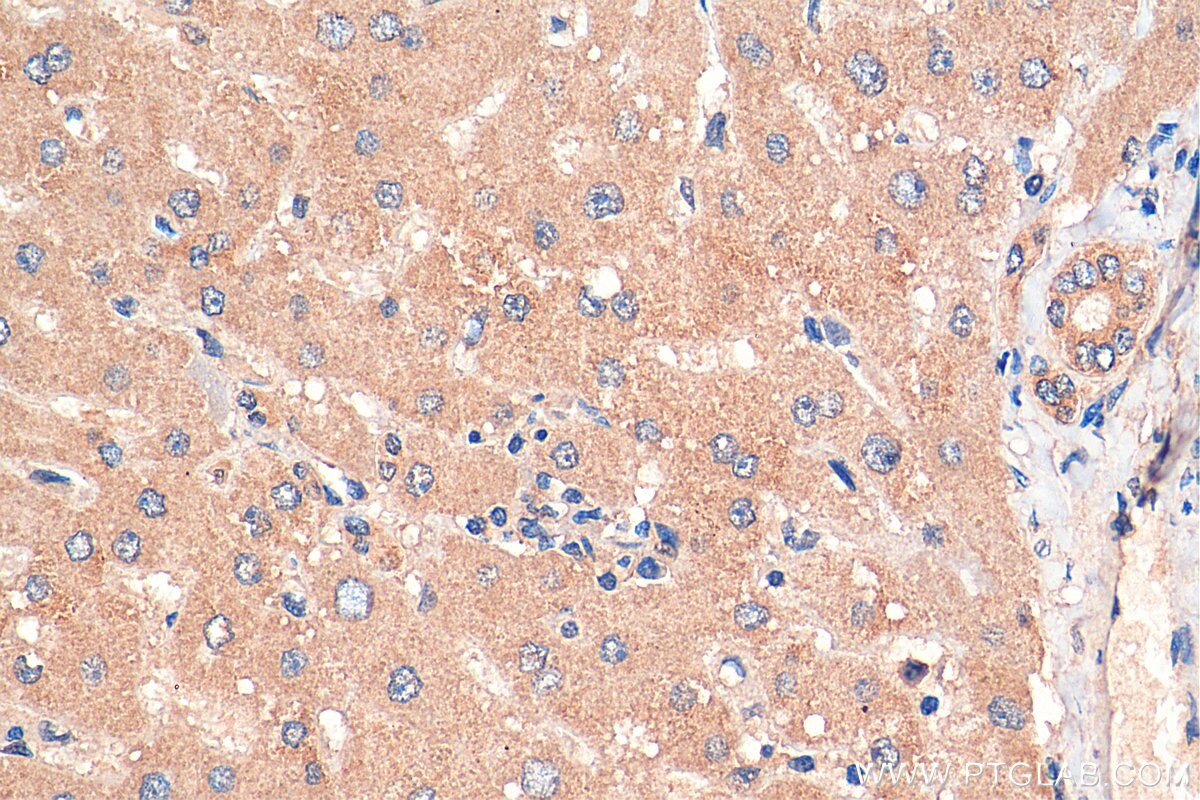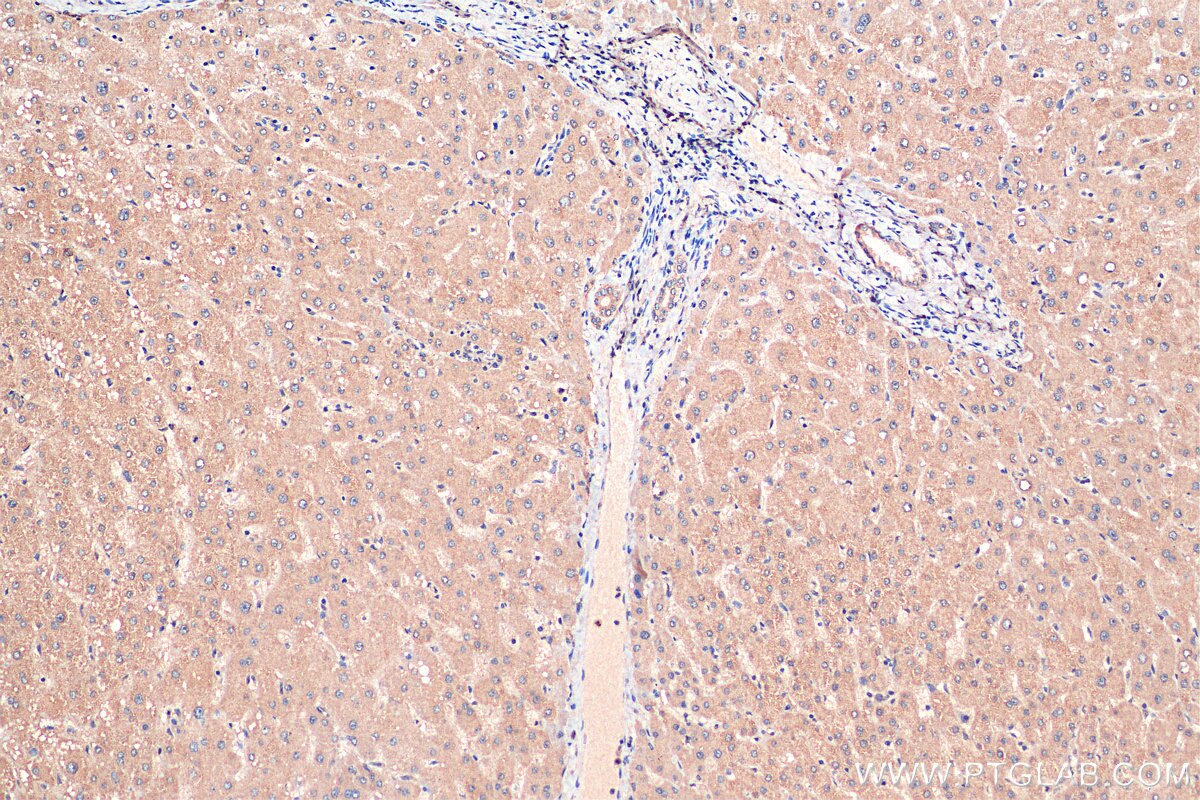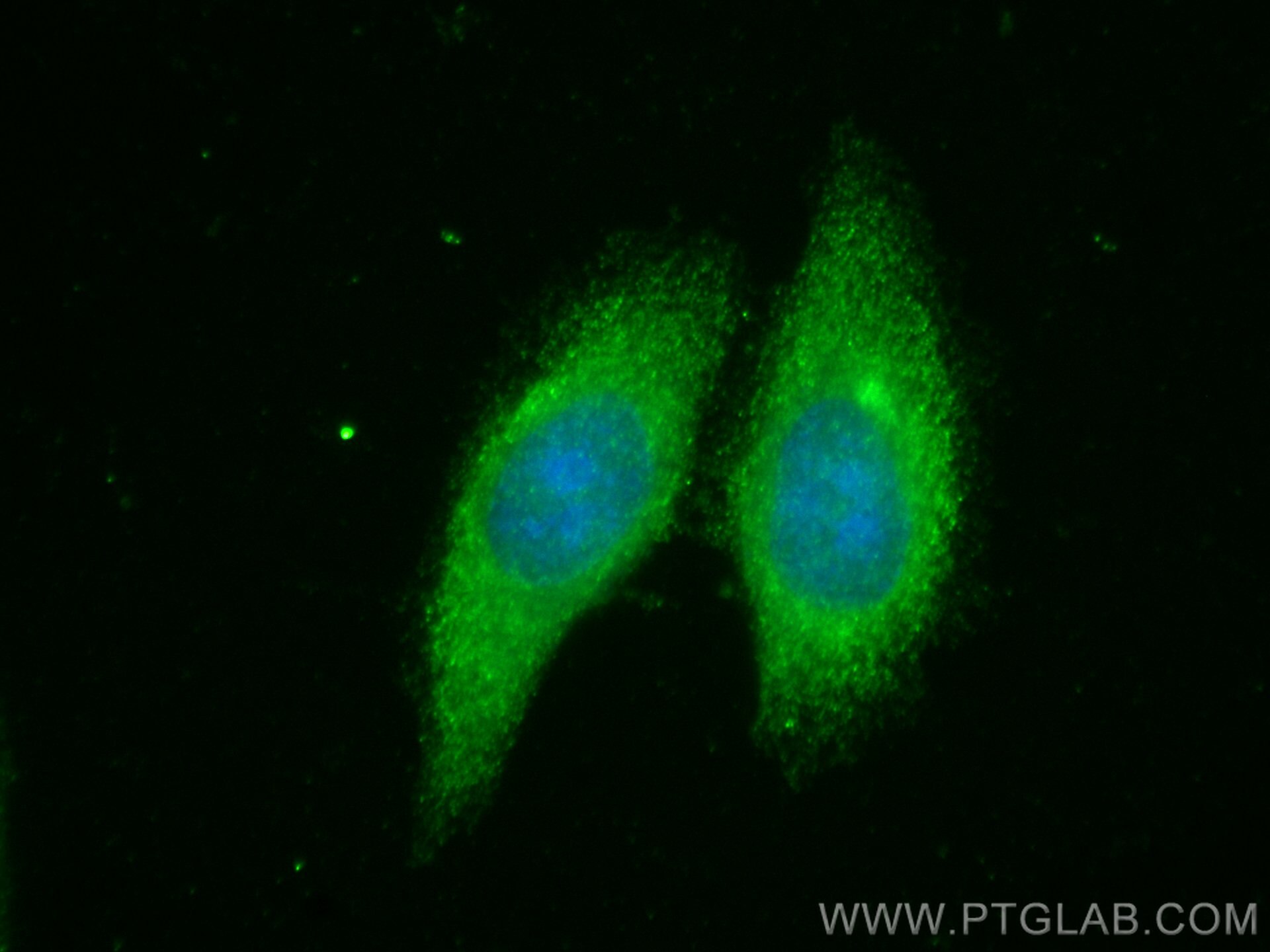Validation Data Gallery
Tested Applications
| Positive IHC detected in | human liver tissue Note: suggested antigen retrieval with TE buffer pH 9.0; (*) Alternatively, antigen retrieval may be performed with citrate buffer pH 6.0 |
| Positive IF/ICC detected in | HepG2 cells |
Recommended dilution
| Application | Dilution |
|---|---|
| Immunohistochemistry (IHC) | IHC : 1:50-1:500 |
| Immunofluorescence (IF)/ICC | IF/ICC : 1:50-1:500 |
| It is recommended that this reagent should be titrated in each testing system to obtain optimal results. | |
| Sample-dependent, Check data in validation data gallery. | |
Product Information
26084-1-AP targets RNF217 in IHC, IF/ICC, ELISA applications and shows reactivity with human samples.
| Tested Reactivity | human |
| Host / Isotype | Rabbit / IgG |
| Class | Polyclonal |
| Type | Antibody |
| Immunogen | RNF217 fusion protein Ag22022 相同性解析による交差性が予測される生物種 |
| Full Name | ring finger protein 217 |
| Calculated molecular weight | 275 aa, 32 kDa |
| Observed molecular weight | 59, 32 kDa |
| GenBank accession number | BC026087 |
| Gene Symbol | RNF217 |
| Gene ID (NCBI) | 154214 |
| RRID | AB_3085839 |
| Conjugate | Unconjugated |
| Form | Liquid |
| Purification Method | Antigen affinity purification |
| UNIPROT ID | Q8TC41 |
| Storage Buffer | PBS with 0.02% sodium azide and 50% glycerol , pH 7.3 |
| Storage Conditions | Store at -20°C. Stable for one year after shipment. Aliquoting is unnecessary for -20oC storage. |
Background Information
E3 ubiquitin-protein ligase RNF217, also known as IBR domain-containing protein 1 (IBRDC1), as a transmembrane (TM) domain-containing RBR-type E3 ubiquitin-protein ligase, belongs to a highly conserved member of the RING finger family. RNF217 mediates the degradation of the iron exporter ferroportin/SLC40A1 and thus regulates iron homeostasis(Uniprot, PMID: 33895792).
Protocols
| Product Specific Protocols | |
|---|---|
| IHC protocol for RNF217 antibody 26084-1-AP | Download protocol |
| IF protocol for RNF217 antibody 26084-1-AP | Download protocol |
| Standard Protocols | |
|---|---|
| Click here to view our Standard Protocols |


